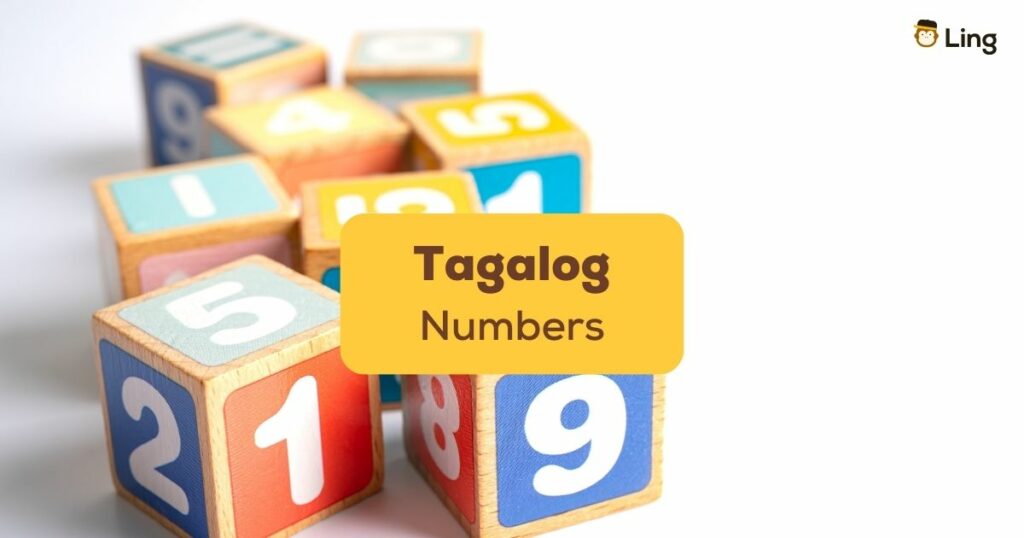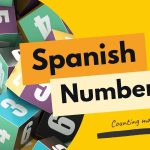No matter where you are in the world, numbering and counting are deemed as two of the most basic vocabulary lessons every person should memorize by heart. These basics unify us as humans, regardless of the language we speak. And the Filipino language, or Tagalog, is no exception! Imagine you’re strolling through the vibrant streets of Manila. Wouldn’t it be better if you could converse with the locals using Tagalog numbers?
When you’re learning the Tagalog language, knowing the numbers is a big help. In this post, we’ll teach you these numbers in an easy and fun way. You’ll learn how to count from zero to a million quickly! So, are you ready to learn something new? Let’s start counting!
What Is The Word Numbers In Tagalog?
The word number in Tagalog is bilang. But some of you might think it’s called numero, which is a Spanish word. However, it was once used as the official translation before. Understanding the Tagalog translation of numbers goes beyond simple linguistic knowledge. It has many benefits that can enhance your personal and cultural experiences.
Moreover, the language of the Philippines is unique because it features significant connections with the Spanish language. So, you might be surprised to know that Filipinos interchangeably use two sets of numbering systems: Tagalog and Spanish. These systems are normally used daily- when you are in the market, counting things, or even telling time.
Normally, the Spanish counting system is used for telling time, age, and prices of goods in palengke or public marketplace in English. On the other hand, Tagalog numbers are mainly used for counting things, people, money, and random objects. As a word of advice, do note that Filipinos use code-switching where L1 is Tagalog and L2 is Spanish or English. That said, it might be helpful to brush up on your Spanish skills, too.

Cardinal Tagalog Numbers
Ready to take a closer look at Tagalog numbers? Great, let’s start with something basic – cardinal numbers. We use these numbers daily to count and order stuff, like “one, two, three…” and so on.
Below is an example of the first set of cardinal numbers 1-10:
| English | Tagalog | Spanish |
|---|---|---|
| Zero | Wala | Sero |
| One | Isa | Uno |
| Two | Dalawa | Dos |
| Three | Tatlo | Tres |
| Four | Apat | Kuwatro |
| Five | Lima | Singko |
| Six | Anim | Sais |
| Seven | Pito | Siete |
| Eight | Walo | Otso |
| Nine | Siyam | Nuwebe |
| Ten | Sampu | Diyez |
Counting From 11 To 29 In Tagalog
Luckily, learning the Tagalog language is an easy process, especially if you know English. You see, Tagalog counting follows the same pattern as English counting with orders such as ones, tens, and hundreds.
Check out this video about Tagalog numbers to learn more:
Tagalog Numbers From Eleven To Nineteen (11 to 19)
Ready to amp up your counting game? In this table, we’ll introduce you to numbers from eleven to nineteen (11 to 19) in Tagalog. Master these, and you’ll be counting like a pro in no time! So, let’s get started – or as we say in Tagalog, Simulan na natin!
| English | Tagalog | Spanish |
|---|---|---|
| Eleven | Labing-isa | Onse |
| Twelve | Labing-dalawa | Dose |
| Thirteen | Labing-tatlo | Trese |
| Fourteen | Labing-apat | Katorse |
| Fifteen | Labing-lime | Kinse |
| Sixteen | Labing-anim | Disisais |
| Seventeen | Labing-pito | Disisiete |
| Eighteen | Labing-walo | Disiotso |
| Nineteen | Labing-siyam | Disinuwebe |
Tagalog Numbers From Twenty To Twenty Nine (20 to 29)
All set to take your counting skills a notch higher? In this table, we’re moving up to the numbers from twenty to twenty-nine (20 to 29) in Tagalog. Once you’ve got these down, you’ll breeze through numbers like a pro!
| English | Tagalog | Spanish |
|---|---|---|
| Twenty | Dalawampu | Beynte |
| Twenty-one | Dalawampu’t isa | Beynte uno |
| Twenty-two | Dalawampu’t dalawa | Beynte dos |
| Twenty-three | Dalawampu’t tatlo | Beynte tres |
| Twenty-four | Dalawampu’t apat | Beynte kwatro |
| Twenty-five | Dalawampu’t lima | Beynte sinko |
| Twenty-six | Dalawampu’t anim | Beynte sais |
| Twenty-seven | Dalawampu’t pito | Beynte siete |
| Twenty-eight | Dalawampu’t walo | Beynte otso |
| Twenty-nine | Dalawampu’t siyam | Beynte nuwebe |
How To Count From 30 To 90 In Tagalog
To learn to count using 30 to 90, just focus on changing the ‘dalawampu’t‘ in the Tagalog table above to the corresponding numeric value, and you’re more than halfway there. Interestingly enough, this method also works for the Spanish variations.
| English | Tagalog | Spanish |
|---|---|---|
| Thirty | Tatlumpu | Trenta |
| Forty | Apatnapu | Kwarenta |
| Fifty | Limampu | Singkwenta |
| Sixty | Animnapu | Seisenta |
| Seventy | Pitumpu | Seyenta |
| Eighty | Walmupu | Otsenta |
| Ninety | Siyamnapu | Nobenta |
How To Count From 100 To 900 In Tagalog
Counting in hundreds in Tagalog might seem a bit tricky at first. But don’t worry – it’s all about getting the hang of the structure. We follow a general pattern: take a number in the hundred’s place, add –na or –ng (typically used to denote “of”), follow it up with daan or raan (meaning hundred), and for numbers in between, we add at (meaning and) plus the rest of the numbers. Confused?
Here’s a quick guide to get you started:
| Signifier | When to use | Example |
|---|---|---|
| na | If the number ends with a consonant | 400 = Apat na raan |
| ng | If the number ends with a vowel | 200 = Dalawang daan |
| daan | Used in combination with signifier “ng” | 800 = Walong daan |
| raan | Used in combination with signifier “na” | 600 = Anim na raan |
| at | Used to present the connection between hundreds and tens place | 649 = Anim na raan at apatnapu’t siyam |
Once you’ve got the hang of this pattern, counting from 100 to 900 in Tagalog will be a breeze! To continue our counting from 100 to 900, take note of the cardinal Tagalog numbers below:
| English | Tagalog | Spanish |
|---|---|---|
| One hundred | Isang daan | Ciento |
| Two hundred | Dalawang daan | Dos ciento |
| Three hundred | Tatlong daan | Tres ciento |
| Four hundred | Apat na daan | Kuwatro ciento |
| Five hundred | Limang daan | Quinientos |
| Six hundred | Anim na daan | Sais ciento |
| Seven hundred | Pitong daan | Siete ciento |
| Eight hundred | Walong daan | Otso ciento |
| Nine hundred | Siyam na daan | Nuwebe ciento |
Counting From 1000 To 9000 In Tagalog
Learning to count from 1000 to 9000 in Tagalog is easier! First, let’s learn the word for “thousand” in Tagalog—libo. To form numbers, you just need to add the number of thousands to the word libo.
Let’s start by counting multiples of 1000:
| English | Tagalog | Spanish |
|---|---|---|
| One thousand | Isang libo | Mil |
| Two thousand | Dalawang libo | Dos mil |
| Three thousand | Tatlong libo | Tres mil |
| Four thousand | Apat na libo | Kuwatro mil |
| Five thousand | Limang libo | Singko mil |
| Six thousand | Anim na libo | Sais mil |
| Seven thousand | Pitong libo | Siete mil |
| Eight thousand | Walong libo | Otso mil |
| Nine thousand | Siyam na libo | Nuwebe mil |
As you can see, it’s simple and follows a similar pattern to counting in English. Just remember the numbers (Isa, Dalawa, Tatlo, etc.) and add libo at the end.
*Note: Colloquially, Filipinos usually say sanlibo instead of isang libo for 1000.

Counting From 10,000 To 100,000 In Tagalog
Before attempting larger numbers, be sure you’re comfortable with numbers 1 – 10 in Tagalog, as higher numbers build on these basics. In Tagalog, counting numbers in this range uses a combination of multiples of sampu (ten), daan (hundred), and libo (thousand).
I know this can be confusing, but there are language learning apps, like the Ling app, that can make the process easier and more interactive. These apps are downloadable for iOS and Android devices, making them accessible whenever you want to practice.
Back to numbers in Tagalog. For counting 10,000 to 100 thousand, Tagalog speakers, simply use the format below:
| English | Tagalog | Spanish |
|---|---|---|
| Ten thousand | Sampung libo | Diez mil |
| Twenty thousand | Dalawampung libo | Bente mil |
| Thirty thousand | Tatlumpung libo | Treynta mil |
| Forty thousand | Apatnapung libo | Kuwarenta mil |
| Fifty thousand | Limampung libo | Signkuwenta mil |
| Sixty thousand | Animnapung libo | Sesenta mil |
| Seventy thousand | Pitumpung libo | Setenta mil |
| Eighty thousand | Walumpung libo | Otsenta mil |
| Ninety thousand | Siyamnapung libo | Nobenta mil |
| One hundred thousand | Sandaang libo | Siyento mil |
| Two hundred thousand | Dalawang daang libo | Dos siyentos mil |
| Three hundred thousand | Tatlong daang libo | Tres siyentos mil |
| Four hundred thousand | Apat na raang libo | Kuwatro siyentos mil |
| Five hundred thousand | Limang daang libo | Kinyentos mil |
| Six hundred thousand | Anim na raang libo | Seis siyentos mil |
| Seven hundred thousand | Pitong daang libo | Siyete siyentos mil |
| Eight hundred thousand | Walong daang libo | Otso siyentos mil |
| Nine hundred thousand | Siyam na raang libo | Nuwebe siyentos mil |
| One million | Isang milyon | Un milyon |
Ordinal Tagalog Numbers
First things first, let’s understand what ordinal numbers are. In the simplest terms, they’re rankings. They help us define positions in a sequence – whether it’s being the first in line, the second to do something, or even the third best at something.
But, how do you convey this in Tagalog?
Tagalog has an easy system for this. All you need to do is add the prefix ‘ika-‘ to the basic cardinal numbers, and voila! You have your ordinal numbers.
| English | Cardinal Tagalog Numbers | Ordinal Tagalog Numbers |
|---|---|---|
| One / First | Isa | Una |
| Two / Second | Dalawa | Ikalawa |
| Three / Third | Tatlo | Ikatlo |
| Four / Fourth | Apat | Ikaapat |
| Five / Fifth | Lima | Ikalima |
| Six / Sixth | Anim | Ikanim |
| Seven / Seventh | Pito | Ikapito |
| Eight / Eighth | Walo | Ikawalo |
| Nine / Ninth | Siyam | Ikasiyam |
| Ten / Tenth | Sampu | Ikasampu |
Unlocking Tagalog Numbers
Remember, there is so much more than saying good morning and thank you in the language. If you are planning to visit the Pearl of the Orient Seas, learning how to count using Tagalog numbers is a surefire way to astound most locals. With your newfound vocabulary in Tagalog numbers, you are one step closer to achieving full Tagalog fluency! With some practice and patience, you’ll be counting like a true Pinoy in no time. So, go ahead and impress everyone with your newfound skills in counting Tagalog numbers!
If this post captured your interest, don’t just keep it to yourself. Help spread the joy of learning by sharing this with your friends who might also find it beneficial. Knowledge shared is knowledge doubled, and the more we grow together, the stronger our mutual understanding becomes!



































































